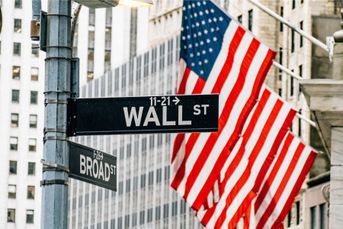Corporate bonds look risky after a decade of heavy issuance
Some institutional investors are turning cautious on company debt as Fed tightening hikes companies' borrowing costs.
Corporate debt investors, having partied like it’s 1999, should remember what came after that: a big wave of defaults.
The 2000 to 2002 recession looms only faintly in the minds of many on Wall Street, but it may be the best model for the potential pain coming in company debt, said LibreMax Capital’s Greg Lippmann in an interview this week at the Milken Institute Global Conference in Beverly Hills. The consumers who were a key part of the 2008 downturn, in contrast, look relatively strong this time around, he added. Last decade, Mr. Lippmann was among the first to recognize that the U.S. housing bubble was near bursting.
The relative risk is evident in part in debt growth: Investment-grade bonds outstanding have more than doubled since the end of 2008. Total debt outstanding, including loans, for all U.S. companies grew by more than a third between the end of 2008 and 2017.
For consumers, that liability expansion has been much more measured, with total household borrowings up about 3.8% since the end of 2008, according to the New York Federal Reserve.
That comparative growth has worried big bond buyers. BlackRock Inc. and Guggenheim Partners have recently turned more cautious on buying corporate debt. The junk-bond market is one of the of the major cracks in the foundation of the economy, said Tad Rivelle, chief investment officer for fixed income at TCW Group Inc.
“You can keep kicking the can down the road but sooner or later there’s going to be a reckoning,” Mr. Rivelle said in a panel at the Milken Institute Global Conference. Billionaire Mike Milken was a pivotal figure in building the junk bond market in the 1980’s out of the Beverly Hills office of Drexel Burnham Lambert.
As borrowings have grown, so has the risk. For high-grade companies in 2017, debt outstanding relative to an earnings measure was at its highest level since at least 2010, according to a report from Morgan Stanley.
More of that debt is rated just a few steps above junk. BBB-rated issuance accounted for 42% of total U.S. investment-grade corporate bond sales in 2017, according to Morgan Stanley, a record for as far back as the bank’s data go. If credit ratings were based on leverage alone, more than a quarter of the investment-grade universe would have a high-yield rating, the report said.
Debt loads are high for junk companies, too. S&P Global Ratings estimated in February that there were more companies globally carrying debt loads in excess of five times a measure of earnings than in 2007, on the eve of the financial crisis.
(More: Top-performing junk bond fund moves out of junk)
Now the Federal Reserve is raising rates and scaling back its balance sheet, which lifts companies’ borrowing costs and makes it harder for highly levered companies to access markets.
“You certainly should get out of high yield,” Guggenheim Partners chief investment officer Scott Minerd said in an interview Wednesday, but he argued that it’s too soon to short junk debt since Guggenheim doesn’t expect a recession until early 2020. “Investment-grade credit makes no sense at all.”
Brandywine Global Investment Management, with $74 billion in assets, reduced its corporate credit exposure to less than 5% from as high as 50%, according to Anujeet Sareen, portfolio manager with the Philadelphia-based unit of Legg Mason Inc. Others like TCW Group have been curbing exposure since 2016.
“Since interest rates are still relatively low and the cycle is still in good shape, there is no aggregate stress in the credit market,” Mr. Sareen said by email Tuesday. “However, balance sheets are now at a stage where there is greater risk in corporate bonds if the Fed raises interest rates too aggressively or the economy slows for unexpected reasons.”
There are still plenty of bulls on credit. Apollo Global Management and CQS were among the firms at the conference said they think the outlook for corporate credit is solid, pointing to global growth and lower U.S. corporate taxes.
By at least one measure, corporate debt looks fine compared with consumer debt. Companies have more earnings to cover their regular interest payments than consumers do, according to UBS Group AG strategists Stephen Caprio and Matthew Mish. That shows up in a metric known as the debt service coverage ratio, where a higher ratio indicates a bigger cushion for the borrower.
But there are still signs of simmering risks in corporate debt. The vast expansion of the investment-grade market, combined with the large amount of securities that are just a few steps above junk, is likely to create a “rain of securities” that fall into the high-yield bond market, just as happened in 2002, TCW’s Mr. Rivelle said.
It could take around a year for weakness to show up in the credit markets, said Guggenheim’s Mr. Minerd. Now’s the time to prepare for rising defaults, said Mark Holman, chief executive officer of London-based TwentyFour Asset Management.
“You want to reduce your exposure to highly leveraged companies at this stage in the cycle,” Mr. Holman said. “We’re completely avoiding CCC credits.”
Learn more about reprints and licensing for this article.








